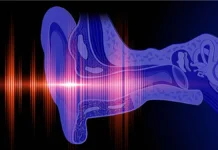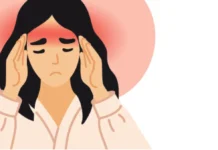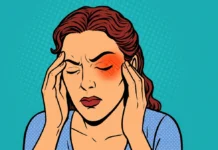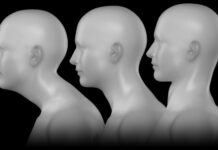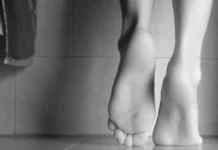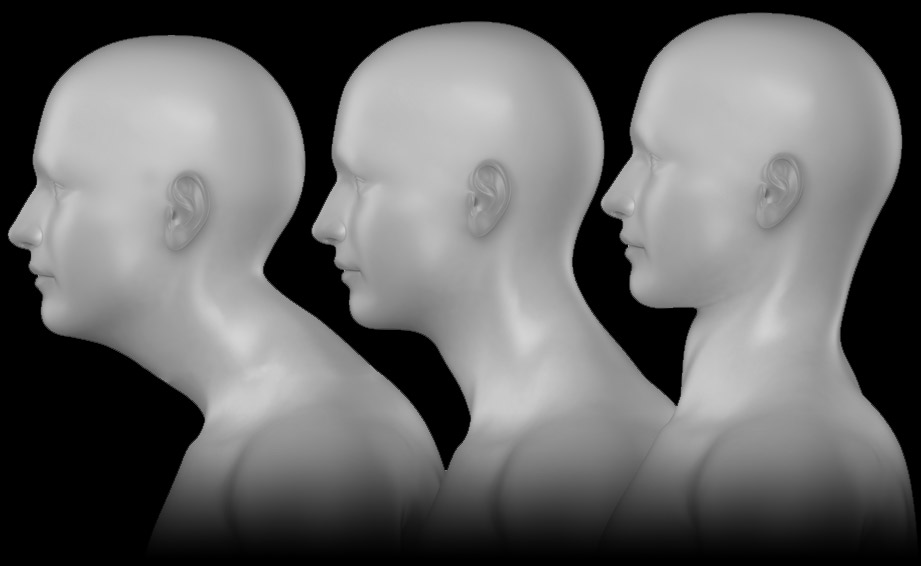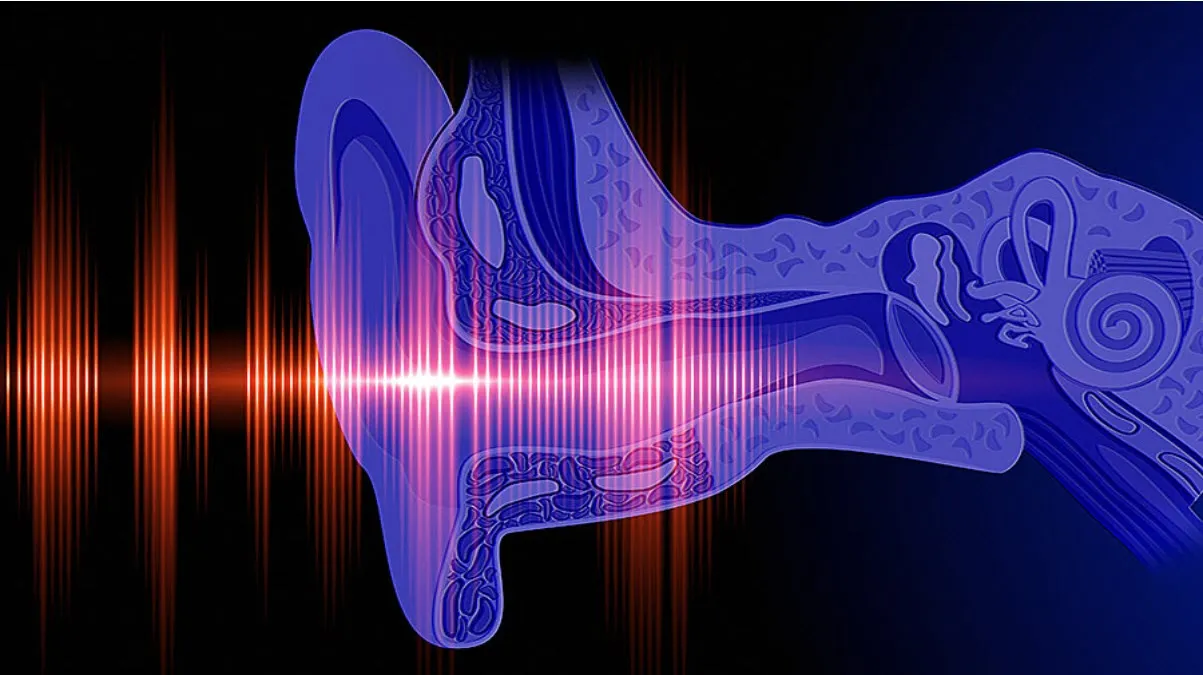Ear pain is a medical term used to describe ear pain. This pain can come from a variety of causes and can affect different parts of the ear, including the outer ear, middle ear, or inner ear.
Introduction
Otalgia, often referred to as ear pain, is a common symptom that can result from a variety of causes, ranging from minor conditions to more complex medical problems. This feeling of discomfort may be localized to the outer ear, ear canal, eardrum or even be referred pain from other areas of the body.
Ear pain can be classified into two main categories: primary ear pain, directly related to ear problems, and secondary ear pain, resulting from medical conditions not directly related to the ear, but causing referred pain.
Common causes of ear pain include ear infections, whether in the outer (otitis externa) or middle (otitis media) ear. These infections can lead to painful inflammation and, in some cases, fluid buildup behind the eardrum.
Jaw disorders, such as temporomandibular joint (TMJ) dysfunction, can also cause referred ear pain. When the jaw is clenched or misaligned, it can put pressure on the surrounding nerves, creating a feeling of discomfort in the ear.
Sometimes rapid changes in altitude, such as when flying in an airplane or scuba diving, can cause ear pain. This is often due to a difference in pressure between the inside and outside of the ear, causing distortion of the eardrum and associated pain.
The impact of wisdom teeth on surrounding structures can also cause earache. When these teeth emerge or put pressure on adjacent nerves, it can result in pain referred to the ear.
In the field of osteopathy, a holistic approach is often adopted to evaluate ear pain. Practitioners consider the patient’s overall health, focusing on posture, jaw mobility and cranial structures. Gentle techniques can be used to promote balance and relieve tension that may be contributing to the pain.
Warning: The information on this blog is for educational purposes only and not a substitute for professional medical advice. Do not attempt any maneuvers, exercises, or treatments described here without consulting a qualified healthcare professional. Improper application may lead to injury or complications. Always seek professional guidance for your specific health needs.
Who Is at Risk for Otalgia?
Otalgia, or ear pain, can affect individuals of all ages and backgrounds. However, certain factors and habits increase the likelihood of experiencing this condition. Understanding these predisposing elements can help individuals take preventive measures and seek timely medical care when needed. Below, we explore the common risk factors associated with otalgia.
1. Frequent Ear Infections
Recurrent ear infections, especially in children, are among the most common causes of primary otalgia. Children have shorter and more horizontally oriented Eustachian tubes, which make them more prone to infections. Adults who experience chronic otitis media or external ear infections, often due to underlying conditions like diabetes or immunosuppression, are also at higher risk.
2. Anatomical Factors
Structural differences or abnormalities in the ear, jaw, or surrounding areas can predispose individuals to otalgia. For example:
- Eustachian Tube Dysfunction: Narrow or blocked tubes can prevent proper drainage of fluids, leading to pain and infections.
- Jaw Misalignment or TMJ Disorders: Dysfunction of the temporomandibular joint (TMJ), which connects the jaw to the skull, can cause referred pain to the ear. Teeth grinding (bruxism) exacerbates this risk.
- Congenital Anomalies: Structural issues like cleft palate or craniofacial deformities may impair ear function and increase susceptibility to pain.
3. Lifestyle Factors
Certain lifestyle habits can significantly contribute to the development of otalgia:
- Excessive Use of Earbuds or Headphones: Prolonged use of in-ear devices can cause pressure or irritation in the ear canal, increasing the risk of inflammation or external ear infections.
- Exposure to Loud Noises: Regular exposure to loud environments, such as concerts or industrial settings, can damage the ear’s delicate structures and result in pain.
- Scuba Diving or Frequent Air Travel: Sudden changes in barometric pressure, commonly experienced during air travel or diving, can cause barotrauma and otalgia, especially in individuals with preexisting sinus or ear issues.
4. Underlying Health Conditions
Several medical conditions increase the likelihood of developing otalgia:
- Allergies and Sinusitis: Chronic nasal congestion and inflammation can lead to referred pain in the ears.
- Gastroesophageal Reflux Disease (GERD): Acid reflux can irritate the throat and affect nerves connected to the ear, causing discomfort.
- Neck and Spine Issues: Poor posture or cervical spine dysfunctions can compress nerves that refer pain to the ear.
5. Stress and Emotional Factors
Stress, anxiety, and emotional tension can manifest physically, often exacerbating conditions like bruxism and TMJ disorders, both of which can lead to otalgia. Chronic stress also weakens the immune system, increasing the likelihood of infections that contribute to ear pain.
6. Age and Vulnerability
While children are more prone to primary otalgia due to anatomical differences, older adults are at risk of secondary otalgia caused by underlying conditions such as arthritis, cardiovascular disease, or cancers in the head and neck region. Reduced immunity with age further increases vulnerability.
7. Environmental Factors
Living or working in areas with high levels of pollution, dust, or allergens can irritate the ear canal and surrounding structures, contributing to otalgia. Humid climates can also predispose individuals to swimmer’s ear, a common cause of external otalgia.
Causes of ear pain
Ear pain, or ear pain, can have a variety of causes, ranging from local ear problems to medical conditions affecting other parts of the body. Understanding the different causes of ear pain is crucial for accurate diagnosis and appropriate treatment.
Ear infections are among the main causes of ear pain. Otitis externa, an infection of the external ear canal, can cause severe pain, usually exacerbated by handling the ear. Similarly, otitis media, an infection of the middle ear, can lead to painful pressure and sometimes fluid buildup behind the eardrum.
Dental conditions, especially problems related to wisdom teeth, can contribute to ear pain. Erupted or impacted wisdom teeth can put pressure on nearby nerves, creating pain that may radiate to the ear.
Jaw disorders, such as temporomandibular joint (TMJ) dysfunction, are a common cause of referred ear pain. Problems such as clenching your teeth, excessive chewing, or poor jaw posture can lead to tension and pain felt in the ear.
Pressure changes, such as those encountered during airplane travel or scuba diving, can induce earache. Rapid changes in air pressure can affect the eardrum, causing painful distortion and a feeling of fullness in the ear.
Respiratory infections, such as colds or sinusitis, can also contribute to ear pain. Inflammation of the airways can lead to pressure on the middle ear, causing discomfort.
Sometimes less obvious causes, such as neurological disorders or tumors, can cause ear pain. Although less common, these conditions require a thorough evaluation for an accurate diagnosis.
- External Otitis: An inflammation of the external ear canal, often caused by a bacterial or fungal infection. Otitis externa is sometimes called “swimmer’s ear” because it can occur after prolonged exposure to water.
- Otitis Media: An infection of the middle ear, usually caused by bacteria or viruses. Middle ear infections are most common in children, but can also affect adults.
- Inner Ear Infection (Labyrinthitis): Inflammation of the inner ear can cause ear pain, usually accompanied by dizziness.
- Dental Infections: Dental infections, particularly in the upper molars, can radiate pain toward the ear.
- Temporomandibular Joint (TMJ) Disorders: TMJ problems, which are related to the jaw, can lead to ear pain.
- Blocked Ear Canal: Buildup of earwax or other obstructions in the ear canal can cause pain.
- Sinusitis: Inflammation of the sinuses can cause pain referred to the ear.
- Trauma: Direct trauma to the ear, such as an injury or blow, can cause pain.
- Wisdom Tooth Problems: Wisdom tooth problems, such as infection or inflammation, can cause ear pain.
- Tumors: Although less common, tumors of the ear or nearby structures can be responsible for ear pain.
Symptoms associated with ear pain
Symptoms associated with ear pain, or ear pain, can vary depending on the underlying cause. Here are some common symptoms that may accompany ear pain, depending on the specific conditions:
- External Otitis:
- Ear pain, often aggravated by movement of the pinna.
- Sensitivity to touch in the outer ear.
- Itching in the ear canal.
- Discharge of fluid or pus from the ear.
- Otitis Media:
- Ear pain, often described as a feeling of pressure.
- Hearing loss.
- Discharge of fluid or pus from the ear.
- Fever (especially in children).
- Inner Ear Infection (Labyrinthitis):
- Dizziness.
- Hearing loss.
- Nausea and vomiting.
- Involuntary eye movements (nystagmus).
- Jaw Problems (TMJ):
- Pain in the ear and jaw.
- Difficulty opening or closing the mouth.
- Crackles or clicks when moving the jaw.
- Headache.
- Blockage of the Auditory Canal:
- Sensation of fullness in the ear.
- Hearing loss.
- Tinnitus (noises in the ear).
- Dizziness (in some cases).
- Sinusitis:
- Ear pain, often felt like pressure.
- Facial pain.
- Nasal congestion.
- Runny nose.
- Wisdom Tooth Problems:
- Ear pain on the side of the wisdom tooth.
- Swelling and redness of the gums.
- Difficulty opening the mouth.
- Trauma :
- Ear pain after a blow, fall or other trauma.
- Discharge of blood or fluid from the ear.
- Temporary or permanent hearing loss.
Pathophysiology of ear pain
Here is a general explanation of the pathophysiology based on the main causes of ear pain:
- External Otitis:
- Pathophysiology: Inflammation of the external ear canal may result from moisture accumulated in the canal, promoting bacterial or fungal growth.
- Manifestations: Irritation of the nerve endings in the ear canal causes severe pain, which can be exacerbated by movement of the ear.
- Otitis Media:
- Pathophysiology: A middle ear infection can result from the spread of respiratory infections, leading to inflammation of the middle ear structures and accumulation of fluid behind the eardrum.
- Manifestations: Pressure caused by fluid buildup can cause ear pain, often described as a feeling of pressure. Inflammation can also affect nerve endings, causing pain.
- Inner Ear Infection (Labyrinthitis):
- Pathophysiology: Inflammation of the inner ear can result from a viral or bacterial infection, leading to symptoms such as dizziness, hearing loss, and nausea.
- Manifestations: Ear pain is often associated with dizziness because inflammation can affect the structures responsible for balance in the inner ear.
- Jaw Problems (TMJ):
- Pathophysiology: TMJ disorders can result from problems in the joint between the jaw and the skull, causing pain in the ear region.
- Manifestations: Ear pain is often associated with discomfort in the jaw and can be exacerbated by jaw movement.
- Blockage of the Auditory Canal:
- Pathophysiology: Buildup of earwax or other obstructions in the ear canal can lead to fullness and pain.
- Manifestations: Pain is often associated with decreased hearing and feelings of blocked ear.
- Sinusitis:
- Pathophysiology: Inflammation of the sinuses can cause pain referred to the ear, because the sinuses are anatomically close to the middle ear.
- Manifestations: Ear pain is often associated with nasal congestion and facial pressure.
Recommendations
- Medical Consultation: If you experience ear pain that is persistent, severe, or associated with other symptoms, it is important to consult a healthcare professional. A general practitioner or ear, nose and throat (ENT) specialist will be able to assess the underlying cause and recommend appropriate treatment.
- Avoid Handling the Ear: Avoid putting objects such as cotton swabs in the ear, as this may aggravate the condition or cause injury.
- Local Heat: Applying local heat, such as a hot compress to the outer ear, can sometimes help relieve pain. Make sure the heat is at a comfortable temperature and never apply heat directly to the ear canal.
- Ear Drops: If ear pain is associated with ear canal blockage from earwax, using over-the-counter ear drops can sometimes help soften the earwax to make it easier to remove.
- Painkillers (Analgesics): Over-the-counter painkillers, such as ibuprofen or acetaminophen, may be used to relieve pain. Follow the manufacturer’s instructions and consult a healthcare professional if necessary.
- Hydration: Make sure you stay well hydrated, as this can contribute to overall well-being and promote healing.
- Avoid Exposure to Water: If ear pain is associated with otitis externa, avoid wetting the ear during treatment.
- Auditory Rest: Avoid noisy environments which could aggravate the pain.
Osteopathic Techniques for Relieving Otalgia
1. Temporal Bone Release
- What it targets: Restrictions in the temporal bone, where the ear is located, which can impact auditory function and cause pain.
- How it’s performed: The osteopath gently places their hands around the ear and applies subtle manipulations to improve the mobility of the temporal bone. These techniques can help relieve tension in the surrounding muscles and fascia.
- Benefits: Enhances cranial mobility, improves drainage of the Eustachian tube, and reduces pressure in the middle ear.
2. Eustachian Tube Drainage
- What it targets: Blockage or poor drainage of the Eustachian tube, which connects the middle ear to the nasopharynx.
- How it’s performed: Using light pressure and specific movements, the osteopath works on the area around the base of the skull and jaw to encourage the drainage of fluids and reduce congestion.
- Benefits: Alleviates ear fullness, improves hearing, and reduces inflammation in the middle ear.
3. Mandibular Decompression
- What it targets: Jaw dysfunction (e.g., temporomandibular joint disorders) that can refer pain to the ear.
- How it’s performed: The osteopath uses gentle traction and mobilization techniques to realign the temporomandibular joint (TMJ) and release tension in surrounding tissues.
- Benefits: Reduces referred pain to the ear and promotes better jaw function.
4. Occipital-Cervical Release
- What it targets: The connection between the cervical spine and cranial base, which can influence ear function and pain perception.
- How it’s performed: The osteopath applies gentle pressure to the base of the skull (occiput) and upper neck to release tension and improve mobility in the area.
- Benefits: Relieves tension in the neck, improves cranial nerve function, and enhances lymphatic drainage.
5. Lymphatic Drainage Techniques
- What it targets: Congestion and inflammation in the ear and surrounding areas.
- How it’s performed: The osteopath uses rhythmic, pumping motions over the neck, chest, and head to encourage lymphatic flow and reduce fluid buildup.
- Benefits: Reduces swelling and inflammation, enhances immune response, and promotes healing.
6. Craniosacral Therapy
- What it targets: Imbalances in the cranial and sacral rhythms that can contribute to ear pain and dysfunction.
- How it’s performed: The osteopath uses extremely light pressure on the cranial bones and sacrum to harmonize the flow of cerebrospinal fluid and release restrictions in the cranial sutures.
- Benefits: Eases tension in the head and ears, improves fluid dynamics, and promotes relaxation.
7. Suboccipital Inhibition
- What it targets: Tension in the suboccipital muscles, which can compress nerves and vessels affecting the ear.
- How it’s performed: The osteopath places their fingers under the base of the skull, applying gentle and sustained pressure until the muscles release.
- Benefits: Relieves headaches, neck pain, and referred ear pain.
8. Thoracic Outlet Release
- What it targets: Restrictions in the thoracic outlet, which can impede lymphatic and venous drainage from the head and neck.
- How it’s performed: The osteopath works on the upper chest and shoulder girdle using gentle manipulations to open up the thoracic outlet.
- Benefits: Promotes drainage of fluids from the head and neck, reducing congestion in the ear.
9. Soft Tissue Techniques
- What it targets: Tension in the muscles of the face, neck, and jaw that can contribute to referred ear pain.
- How it’s performed: The osteopath uses kneading, stretching, and direct pressure to release muscle tension and improve circulation.
- Benefits: Improves mobility and reduces inflammation in the muscles associated with otalgia.
10. Cervical Spine Mobilization
- What it targets: Misalignments or restrictions in the cervical spine that can refer pain to the ear.
- How it’s performed: The osteopath uses gentle mobilization techniques to realign and improve the movement of the cervical vertebrae.
- Benefits: Relieves referred pain and restores nerve function in the affected area.
11. Diaphragmatic Breathing Re-education
- What it targets: Stress and tension, which can exacerbate otalgia, especially in cases of bruxism or TMJ issues.
- How it’s performed: The osteopath teaches the patient breathing exercises that engage the diaphragm to reduce tension and improve circulation.
- Benefits: Promotes relaxation, enhances lymphatic flow, and reduces chronic pain.
Exploring the Benefits of Osteopathy in Treating Otalgia: A Curated Review of Scientific Studies
- Kingery, J., Taylor, W., & Braun, D. (2016). Acute Otitis Media. Osteopathic Family Physician.
This article explores the osteopathic approaches to managing acute otitis media, emphasizing osteopathic manipulative treatment (OMT) for reducing otalgia symptoms and inflammation.
Read here - *Baisakhiya, N., Goyal, M., & Singh, G. (2017). Effect of Osteopathic Manipulation in Globus Pharyngeus Patients. International Journal of Therapy.
This study focuses on myofascial release and OMT as effective interventions for somatic disorders, including otalgia caused by associated disorders.
Read here - Gay, C.W., & Murphy, D.R. (2011). Manual Therapy and Ear Pain. Journal of the Canadian Chiropractic Association.
This report outlines the use of manual therapy, including OMT, in treating ear pain associated with tinnitus and vertigo.
Read here - Lindsey, T., et al. (2019). Osteopathic Manipulative Techniques for Otalgia. Osteopathic Family Physician.
A comprehensive review of OMT applications in otalgia management, advocating for further clinical studies to validate effectiveness.
Read here - Marom, T., et al. (2016). Complementary and Alternative Medicine for Otitis Media. Medicine.
The study discusses non-invasive osteopathy and its role in treating otalgia, showing promising results in children.
Read here - Mills, M.V., et al. (2003). OMT as Adjuvant Therapy in Acute Otitis Media. Journal of Pediatrics.
This research highlights the adjunctive benefits of OMT in managing recurrent acute otitis media.
Read here - Wahl, R.A., et al. (2008). Echinacea and OMT in Recurrent Otitis Media. BMC Complementary Medicine.
Combining echinacea with OMT shows improved outcomes for children with recurrent otitis media.
Read here - Levi, J.R., & Brody, R.M. (2013). CAM for Pediatric Otitis Media. International Journal of Therapy.
The study presents the effectiveness of complementary techniques like osteopathy in pediatric otitis media treatment.
Read here - Kuchera, M.L., et al. (1994). Osteopathic Considerations in Systemic Dysfunction. Books.
The book discusses OMT for systemic dysfunctions, including otalgia caused by systemic imbalances.
Read here - Nathan, A.S., et al. (2022). Integrative Medicine for Otitis Media. Otolaryngologic Clinics.
This review evaluates osteopathic interventions among other integrative approaches for otalgia in pediatric populations.
Read here - Kingery, J., Taylor, W., & Braun, D. (2016). Acute Otitis Media. Osteopathic Family Physician.
This study highlights the role of osteopathic manipulative therapy (OMT) in managing acute otitis media and alleviating otalgia symptoms. The findings suggest improvements in pain and inflammation management through osteopathic interventions.
Read here - Levi, J.R., & O’Reilly, R. (2013). Otitis Media. Academia.edu.
The research evaluates the impact of osteopathy on otitis media, emphasizing its efficacy in reducing otalgia. A notable reduction in symptom duration was observed with osteopathic treatment.
Read here - Baisakhiya, N., Goyal, M., & Singh, G. (2017). Study of Osteopathic Manipulation in Globus Pharyngeus Patients. International Journal of Therapy.
This study explores the use of myofascial release and OMT in treating otalgia and related somatic disorders, with significant symptom relief reported.
Read here - Murphy, D.R., & Gay, C.W. (2011). Manual Therapy and Ear Pain. Journal of Canadian Chiropractic Association.
This case study highlights how manual therapy, including osteopathy, effectively reduces otalgia linked to systemic issues like tinnitus and vertigo.
Read here - Lindsey, T., et al. (2019). Osteopathic Manipulative Techniques for Otalgia. Osteopathic Family Physician.
A review of osteopathic treatments for otalgia, advocating for further clinical validation to confirm its benefits.
Read here - Marom, T., et al. (2016). Complementary Medicine in Otitis Media. Medicine.
This systematic review highlights osteopathy’s non-invasive benefits in treating pediatric otalgia, showcasing reduced inflammation and pain.
Read here - Mills, M.V., et al. (2003). Osteopathic Therapy in Recurrent Acute Otitis Media. Journal of Pediatrics.
The study reports OMT’s effectiveness in preventing recurrent ear infections and mitigating associated otalgia.
Read here - Wahl, R.A., et al. (2008). Osteopathy in Children with Recurrent Otitis Media. BMC Complementary Medicine.
Combining osteopathy with herbal remedies showed promising results in addressing recurrent otitis media and associated otalgia.
Read here - Levi, J.R., et al. (2013). CAM for Pediatric Otitis Media. International Journal of Therapy.
This study emphasizes osteopathy as a complementary therapy in managing otitis media and associated pain, demonstrating significant improvements in pediatric patients.
Read here - Fixsen, A. (2013). Osteopathy and Holistic Strategies for Otitis Media. Homeopathy.
The study reviews holistic and osteopathic approaches to otitis media, advocating for their integration into standard treatment protocols to manage pain effectively.
Read here
How to Prevent Otalgia
Preventing otalgia, or ear pain, involves a proactive approach to maintaining ear health and addressing factors that may contribute to discomfort. Whether stemming from primary issues within the ear or referred pain from other areas, such as the jaw or neck, simple preventive measures can go a long way in reducing the risk of otalgia. Below are practical tips to safeguard your ear health and overall well-being.
1. Maintain Proper Ear Hygiene
Good ear hygiene is essential to prevent infections and blockages that can lead to otalgia. Avoid inserting cotton swabs or other objects into your ear canal, as this can push wax deeper or cause injury. Instead, clean the outer ear with a damp cloth and allow the ear canal to self-clean through natural wax expulsion. If excessive earwax is an issue, consult a healthcare professional for safe removal.
2. Protect Your Ears from Loud Noise
Exposure to loud environments, such as concerts, construction sites, or heavy machinery, can damage the delicate structures in your ear and cause pain. Use earplugs or noise-canceling headphones when in noisy settings, and keep the volume at safe levels when using earbuds or headphones. Long-term exposure to loud sounds can lead to chronic conditions like tinnitus or hearing loss, which may exacerbate otalgia.
3. Manage Stress and Tension
Stress and tension often manifest physically, contributing to conditions like bruxism (teeth grinding) and temporomandibular joint (TMJ) dysfunction, both of which can cause referred pain to the ear. Practice relaxation techniques such as yoga, meditation, or diaphragmatic breathing to manage stress. Regular physical activity can also help release tension in the neck, jaw, and shoulders, reducing the likelihood of otalgia.
4. Avoid Sudden Pressure Changes
Barotrauma, or ear pain caused by sudden pressure changes, is common during air travel or scuba diving. To prevent this, try swallowing, yawning, or chewing gum during takeoff and landing to equalize pressure in your ears. Use earplugs designed for air travel to regulate pressure changes. If you are prone to sinus congestion, consider using a saline nasal spray or decongestant before your flight or dive.
5. Prevent and Treat Infections Promptly
Infections in the middle or outer ear are a leading cause of otalgia. Keep your ears dry, especially after swimming or bathing, as moisture in the ear canal creates a breeding ground for bacteria. Use a hairdryer on a low setting to gently dry your ears if necessary. If you experience symptoms of an ear infection, such as pain, swelling, or discharge, seek medical attention promptly to avoid complications.
6. Address Dental and Jaw Health
TMJ disorders and dental issues like misaligned teeth or cavities can cause referred pain to the ear. Maintain regular dental check-ups to address these issues early. If you grind your teeth at night, consider using a mouthguard to protect your jaw and reduce stress on the TMJ.
7. Strengthen Your Immune System
A strong immune system can reduce your risk of infections that may lead to otalgia. Eat a balanced diet rich in fruits, vegetables, and whole grains, and stay hydrated. Ensure you get enough sleep and exercise regularly to support overall health and resilience against illness.
8. Consult Professionals for Persistent Issues
If you experience recurring or chronic ear pain, consult healthcare providers such as osteopaths, dentists, or ENT specialists. Addressing underlying causes like neck tension, jaw dysfunction, or sinus issues can prevent otalgia from becoming a persistent problem.
Conclusion: A Holistic Perspective on Otalgia
Otalgia, or ear pain, is a multifaceted condition that reflects the complexity of the human body. Whether stemming from primary causes within the ear itself or referred pain from nearby structures, it serves as a reminder of the intricate interplay between anatomical, physiological, and even emotional factors in health and well-being.
For healthcare practitioners, an accurate diagnosis is the cornerstone of effective management. By thoroughly assessing the patient’s medical history, performing a detailed clinical examination, and leveraging diagnostic tools, practitioners can distinguish between primary and referred otalgia, ensuring targeted and efficient treatment. This holistic approach not only addresses the underlying causes but also alleviates the patient’s discomfort and improves their overall quality of life.
For patients, it is essential to recognize that ear pain is not always a standalone issue; it may be linked to broader musculoskeletal dysfunctions, stress, or lifestyle factors. By adopting a proactive stance toward health, which may include consulting with specialists like osteopaths, individuals can address the root causes of their symptoms rather than merely masking the pain.
Osteopathy, in particular, offers a unique perspective by considering the body as a cohesive system. Techniques aimed at improving circulation, releasing tension, and restoring balance can provide significant relief, especially in cases of referred otalgia. However, this approach works best when integrated into a comprehensive treatment plan that may also include medical interventions, physical therapy, or stress management.
Ultimately, the key takeaway is that otalgia should not be ignored or underestimated. Whether it’s a mild discomfort or a persistent issue, ear pain is your body’s way of signaling that something requires attention. By seeking timely, professional advice and embracing a holistic approach to care, you can ensure not only relief from symptoms but also long-term health and resilience.
At Osteomag, we are committed to shedding light on complex health conditions like otalgia and promoting a multidisciplinary, patient-centered approach to care. Remember, your health is an ongoing journey, and every step you take toward understanding your body brings you closer to lasting well-being.
References
Kingery, J., Taylor, W., & Braun, D. (2016). Acute Otitis Media. Osteopathic Family Physician.
This article reviews osteopathic approaches to managing acute otitis media, emphasizing manipulative therapy to reduce otalgia symptoms and inflammation.
Read here
Baisakhiya, N., Goyal, M., & Singh, G. (2017). Effect of Osteopathic Manipulation in Globus Pharyngeus Patients. International Journal of Therapy.
This study discusses myofascial release and other osteopathic manipulative treatments as effective interventions for disorders contributing to otalgia.
Read here
Gay, C.W., & Murphy, D.R. (2011). Manual Therapy and Ear Pain. Journal of the Canadian Chiropractic Association.
A detailed examination of manual therapy techniques, including osteopathy, in treating ear pain associated with systemic issues like tinnitus and vertigo.
Read here
Lindsey, T., et al. (2019). Osteopathic Manipulative Techniques for Otalgia. Osteopathic Family Physician.
A comprehensive overview of osteopathic techniques used in otalgia management, advocating for their inclusion in clinical practice.
Read here
Marom, T., et al. (2016). Complementary and Alternative Medicine for Otitis Media. Medicine.
This study evaluates non-invasive osteopathic methods in managing otitis media, particularly in pediatric populations.
Read here
Mills, M.V., et al. (2003). OMT as Adjuvant Therapy in Acute Otitis Media. Journal of Pediatrics.
Research on the benefits of osteopathic manipulative therapy in managing recurrent acute otitis media.
Read here
Wahl, R.A., et al. (2008). Echinacea and OMT in Recurrent Otitis Media. BMC Complementary Medicine.
A study combining echinacea with osteopathic treatments, showing improved outcomes in recurrent otitis media cases.
Read here
Levi, J.R., & Brody, R.M. (2013). CAM for Pediatric Otitis Media. International Journal of Therapy.
Focuses on the role of osteopathy as a complementary therapy in managing pediatric otitis media and reducing associated pain.
Read here
Kuchera, M.L., et al. (1994). Osteopathic Considerations in Systemic Dysfunction. Books.
Discusses systemic dysfunctions, including otalgia, and the role of osteopathic manipulative treatment in addressing these issues.
Read here
Fixsen, A. (2013). Osteopathy and Holistic Strategies for Otitis Media. Homeopathy.
Reviews the integration of holistic and osteopathic strategies for managing otitis media, advocating a multidisciplinary approach.
Read here





